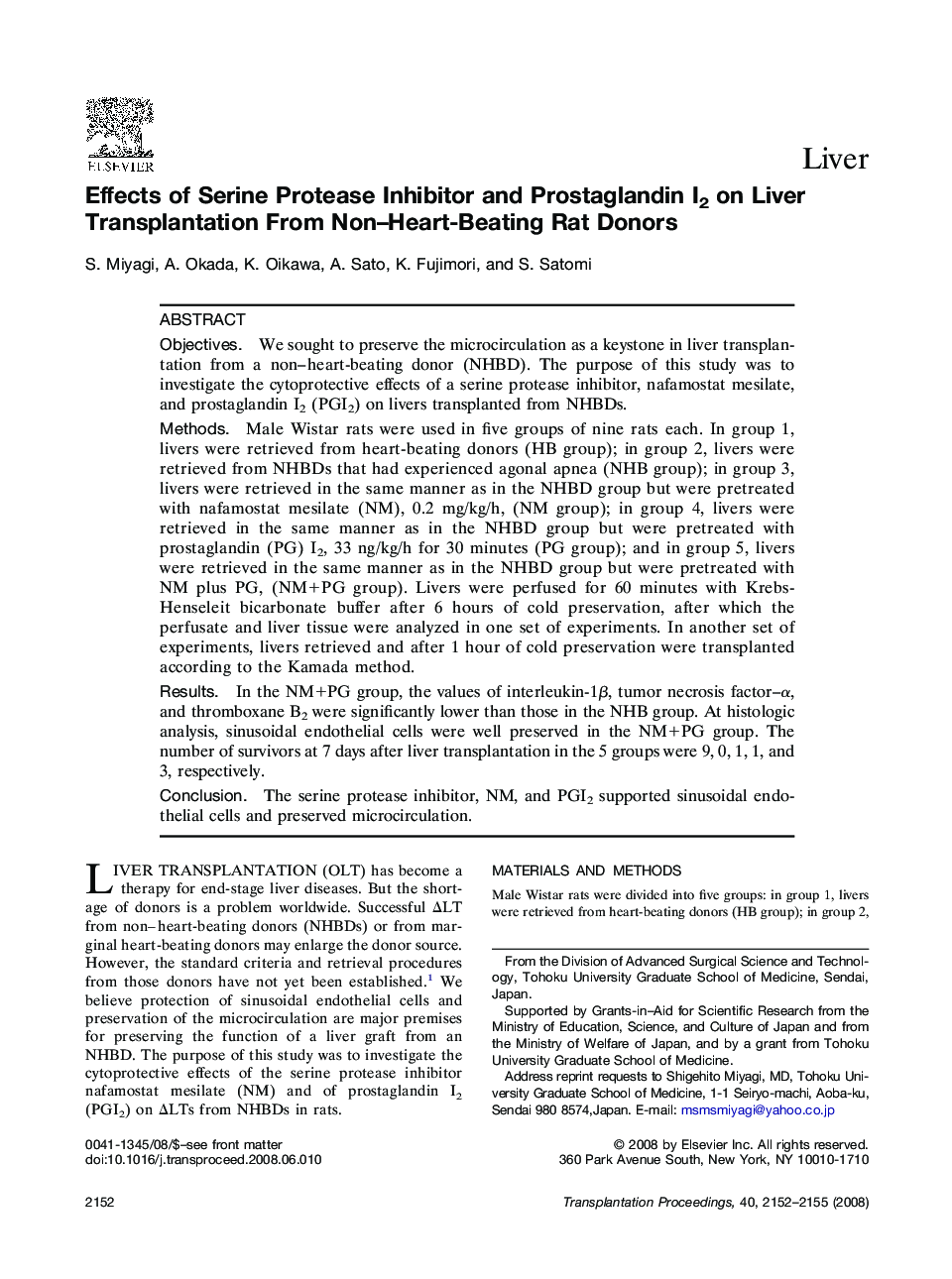| Article ID | Journal | Published Year | Pages | File Type |
|---|---|---|---|---|
| 4262458 | Transplantation Proceedings | 2008 | 4 Pages |
ObjectivesWe sought to preserve the microcirculation as a keystone in liver transplantation from a non–heart-beating donor (NHBD). The purpose of this study was to investigate the cytoprotective effects of a serine protease inhibitor, nafamostat mesilate, and prostaglandin I2 (PGI2) on livers transplanted from NHBDs.MethodsMale Wistar rats were used in five groups of nine rats each. In group 1, livers were retrieved from heart-beating donors (HB group); in group 2, livers were retrieved from NHBDs that had experienced agonal apnea (NHB group); in group 3, livers were retrieved in the same manner as in the NHBD group but were pretreated with nafamostat mesilate (NM), 0.2 mg/kg/h, (NM group); in group 4, livers were retrieved in the same manner as in the NHBD group but were pretreated with prostaglandin (PG) I2, 33 ng/kg/h for 30 minutes (PG group); and in group 5, livers were retrieved in the same manner as in the NHBD group but were pretreated with NM plus PG, (NM+PG group). Livers were perfused for 60 minutes with Krebs-Henseleit bicarbonate buffer after 6 hours of cold preservation, after which the perfusate and liver tissue were analyzed in one set of experiments. In another set of experiments, livers retrieved and after 1 hour of cold preservation were transplanted according to the Kamada method.ResultsIn the NM+PG group, the values of interleukin-1β, tumor necrosis factor–α, and thromboxane B2 were significantly lower than those in the NHB group. At histologic analysis, sinusoidal endothelial cells were well preserved in the NM+PG group. The number of survivors at 7 days after liver transplantation in the 5 groups were 9, 0, 1, 1, and 3, respectively.ConclusionThe serine protease inhibitor, NM, and PGI2 supported sinusoidal endothelial cells and preserved microcirculation.
